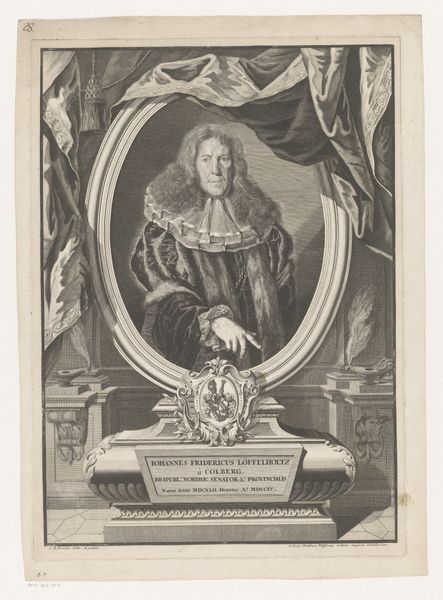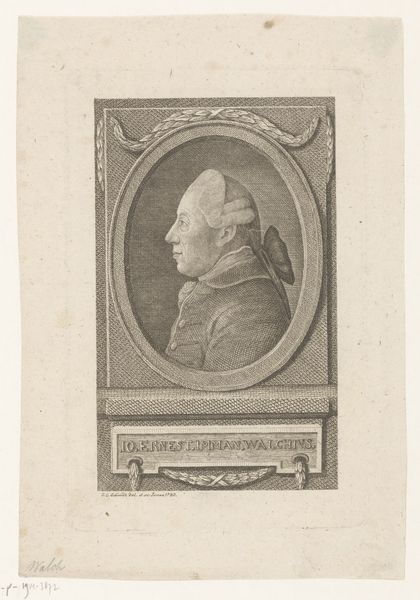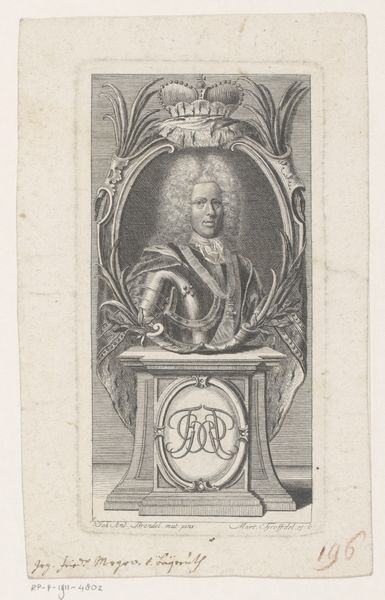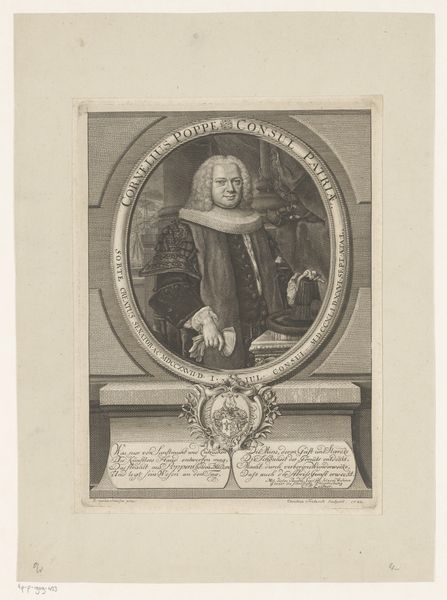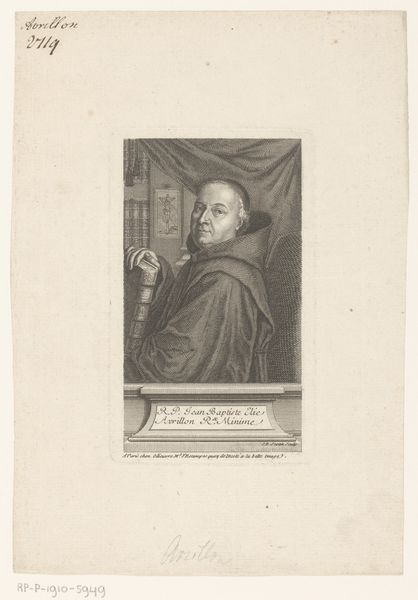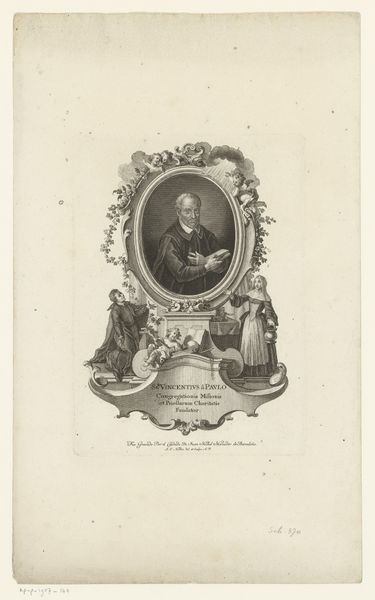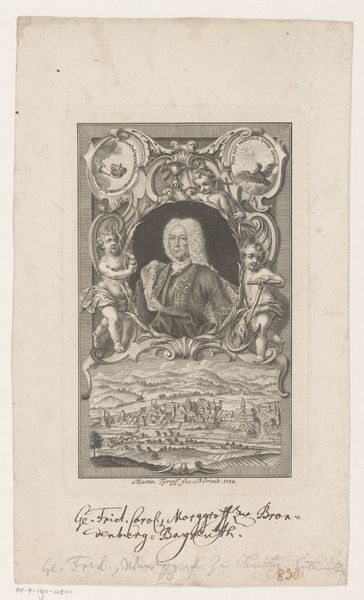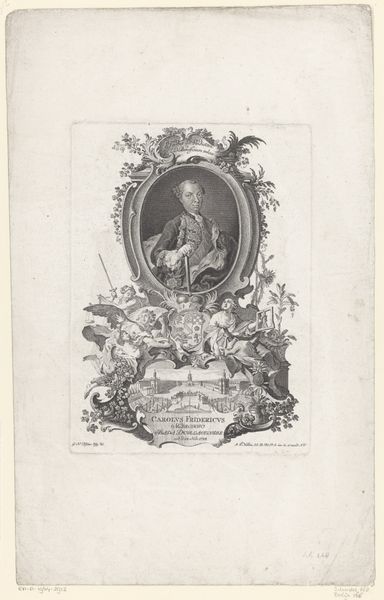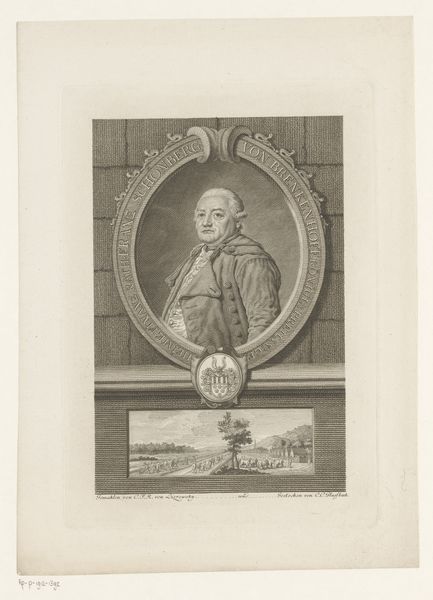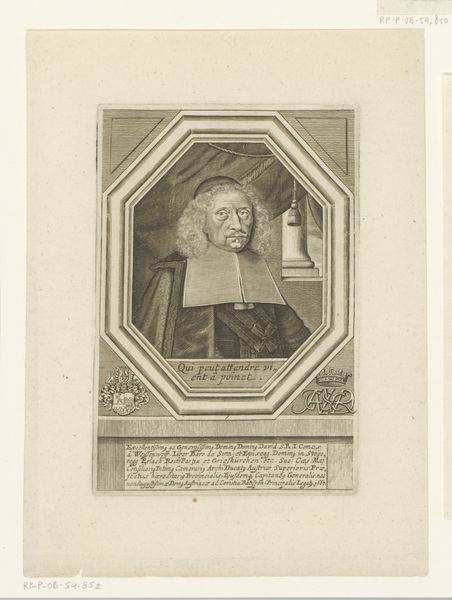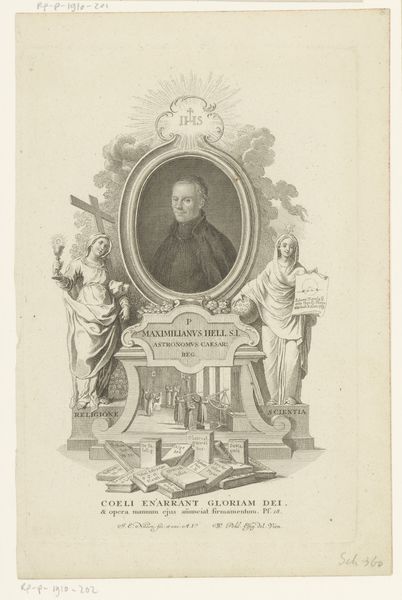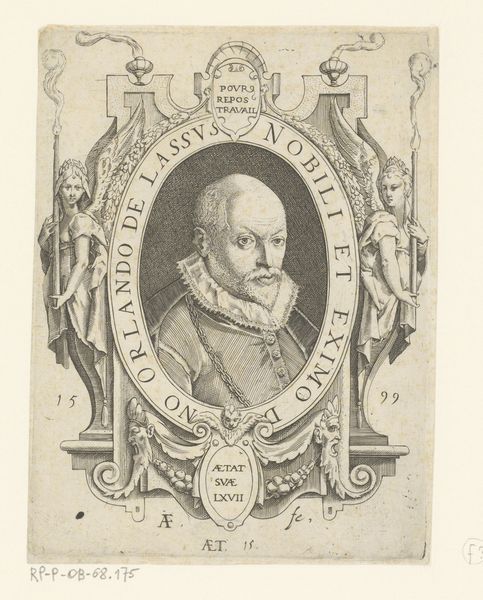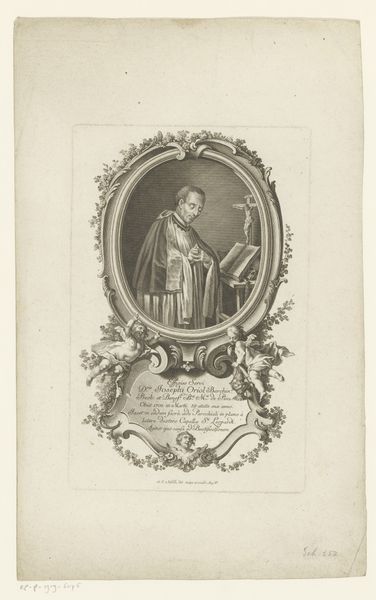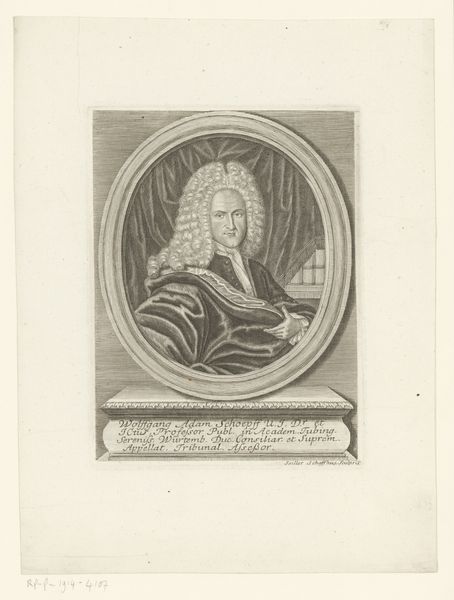
print, engraving
#
portrait
#
baroque
# print
#
old engraving style
#
history-painting
#
engraving
Dimensions: height 188 mm, width 134 mm
Copyright: Rijks Museum: Open Domain
Curator: This engraving, dating from around 1739 to 1751, offers us a glimpse into the world of Johann Frick. The artist is Jacob Andreas (I) Fridrich. It's currently held here at the Rijksmuseum. Editor: Immediately, I'm struck by the stillness. The man’s gaze is direct but not challenging; there's a thoughtfulness captured in the precision of the lines, a formal presentation, and yet, intimate in some way. Curator: It’s interesting you say that, as the Baroque style often leans into dramatic and theatrical displays. But you are right: the portrait does capture Frick as a theologian and intellectual. His presentation and holding the corpus suggests a strong commitment to faith, yet in a way that seeks contemplation. Editor: Exactly. He holds the corpus. What psychological impact could that symbol have had then compared to now? Was it more commonplace, or more intense? That image—Christ suffering—would carry substantial emotional weight, even in an age saturated with religious iconography. Its use here seems less devotional and more emblematic, announcing Frick’s profession and worldview. Curator: The details within the portrait reinforce that; consider the architectural details and the books behind him. Jacob Andreas, with careful hatching, emphasizes Frick's place within the intellectual and spiritual landscape of his time. I would also ask what is Jacob Andreas communicating to the Dutch citizens or viewers by way of Johann Frick’s symbolism here? What cultural transfer is happening, if any? Editor: The surrounding decorative elements certainly serve to elevate Frick's status, imbuing him with authority. This engraving becomes more than a simple likeness. It's a statement about knowledge, faith, and position in society, frozen in a specific historical and cultural context. Thanks to the way these sorts of prints were distributed, we can infer Frick circulated within very influential circles. Curator: Very true; understanding the print medium offers crucial insights into the artwork's social function. It highlights the role of images in solidifying authority and conveying ideas to a wider audience. A fascinating intersection of the personal and the public, wouldn’t you agree? Editor: Absolutely, a complex visual statement with enduring resonance, offering a valuable window into the values and intellectual life of its time.
Comments
No comments
Be the first to comment and join the conversation on the ultimate creative platform.
